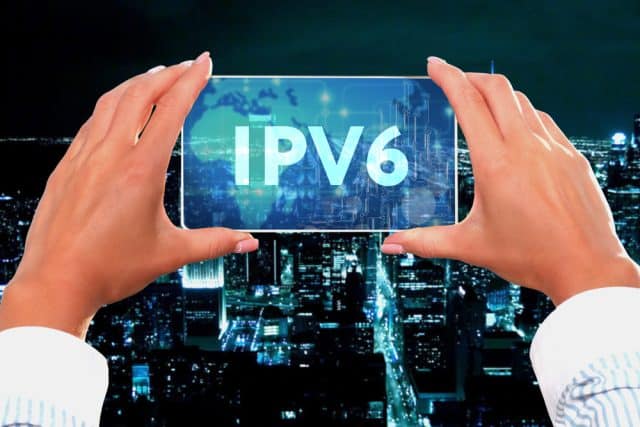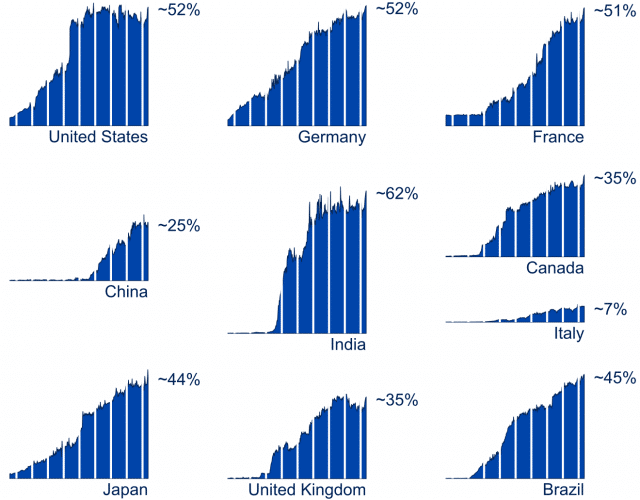Ten years of IPv6 and how it's changed the internet [Q&A]

The IPv6 protocol reached its 10th birthday in June this year. By using more address bits than the earlier IPv4 it opened up the way for more connected devices.
But IPv6 has other benefits too. We spoke to Akamai fellow and chief architect Erik Nygren to find out more about them and how they've changed the internet.
BN: What issues was IPv4 presenting that IPv6 aimed to solve?
EN: Fundamentally, IPv6 was introduced to address the scaling limitations of IPv4. While IPv4 only supports around 4 billion potential addresses due to being 32 bits, the 128-bit IPv6 has a nearly unbounded number of addresses. To put it another way, there are fewer IPv4 addresses than people on Earth while there are enough IPv6 addresses to give every grain of sand on Earth its own address.
Due to its design, IPv6 opens up new possibilities and simplifies some aspects of management. For example, ISPs can provision households with large blocks of addresses from which devices can statelessly auto-configure their IPv6 addresses, and network address translation (NAT) is no longer needed.
BN: What has IPv6 adoption looked like since the launch?
EN: The number of unique IPv6 addresses Akamai sees in a given day has gone up dramatically. On a typical day in April 2022, the Akamai CDN saw more than 2.2 billion unique IPv6 /64 prefixes and more than 7.5 billion unique IPv6 addresses This is a few hundred times the 19 million unique IPv6 addresses Akamai saw on World IPv6 Launch in 2012. Akamai already sees more unique IPv6 addresses than there are possible IPv4 addresses.
Akamai observes end-user adoption levels in the approximately 44 percent to 62 percent range for six of the top 10 global economies, as measured by looking at the percentage of requests to a subset of IPv4+IPv6 dual-stacked content on the Akamai CDN. In comparison, global IPv6 end-user adoption had barely started in 2012 (with Google's measurements showing only approximately 0.6 percent of clients using IPv6).

Many countries worldwide have seen very substantial increases in IPv6 deployment over the past decade. China's IPv6 deployment didn't start at a significant scale until a few years ago, but they've now reached approximately 25 percent IPv6 adoption. A number of large countries now have IPv6 adoption levels exceeding 40 percent, including Belgium, Brazil, France, Germany, Greece, India, Japan, Malaysia, Mexico, Portugal, Saudi Arabia, Thailand, United Arab Emirates, United States, and Vietnam. About half of the world’s 100 largest networks and ISPs now also have IPv6 adoption levels of greater than 40 percent.
On the content site side, a majority of top sites in the US and other countries are enabled for IPv6, and the Internet Society reports that 30 percent of the top 10,000 websites globally are enabled for IPv6.
BN: What are the benefits of switching to IPv6?
EN: ISPs are being driven to adopt IPv6 as they grow their networks. Back in 2012, IPv4 addresses were readily available from the Regional Internet Registries to those who could demonstrate a need. Those supplies have run out and now anyone requiring significant numbers of IPv4 addresses for growing ISPs, cloud services, or other needs typically has to purchase them on the IPv4 transfer market. Auction prices for IPv4 addresses keep going up: IPv4 addresses typically sold for around $20 in 2020 and often sell for upwards of $50 per IPv4 address today. This means that even a single IPv4 /16 (64K addresses) may now be worth more than $3 million. For some of the largest mobile networks, even using a single private IPv4 address pool doesn’t scale (as 10.0.0.0/8 only has 16.8 million addresses). IPv6 becomes the only option without reusing the same IPv4 address in different parts of their network, along with associated operational headaches.
For content providers, enabling IPv6 can improve end-user performance and availability with some studies having shown that enabling IPv6 can yield substantially better performance. The reasons for better performance with IPv6 vary widely but may include:
• ISPs that network address translate (NAT) IPv4 traffic but natively route IPv6 traffic, especially in cases where the NATs experience congestion or runs out of IPs/ports
• IPv6-centric ISPs that deploy IPv4aaS over IPv6, especially when IPv4 traffic is routed through more central egress services while IPv6 can break out at the edge
• Emerging cases where limited availability of IPv4 addresses mean that IPv6 services can be deployed with a broader global footprint
For end-users, ideally IPv6 is transparent and not something they need to worry about. For gaming, IPv6 allows for low-latency point-to-point communication between players without relying on NAT. Microsoft Xbox even recommends IPv6 for the 'best possible experience.'
BN: Are there any lessons learned from deploying IPv6 over the past 10 years?
EN: Deploying and managing both IPv4 and IPv6 in parallel is harder than operating a single stack. As a result, it makes sense to build out new infrastructure as IPv6-centric: using IPv6-only where possible and using IPv4-as-a-service over IPv6 (IPv4aaS) technologies to provide access to legacy IPv4-only resources.
For example, many of the world's largest mobile ISPs have migrated their networks to be IPv6-centric, and more than 90 percent of handsets on those networks have IPv6-only connectivity. Apple's AppStore even requires apps to support IPv6-only, and Android employs 464XLAT to help apps that don’t include native IPv6 support.
Comcast's Xfinity X1 set-top box is typically deployed IPv6-only, meaning that content must be IPv6-enabled to reach it effectively. The highly anticipated new Matter Internet of Things (IoT) standard is also being developed to require IPv6.
Server and cloud environments often run more constrained software, and running both IPv4 and IPv6 in parallel is more operationally intensive. As such, a good model for new server and cloud deployments is to only use single-stack IPv6 internally, and to optionally use NAT64 for accessing external IPv4-only resources if needed.
BN: What does the future hold for IPv6?
EN: Hopefully the massive growth in IPv6 end-user and content adoption seen over the past decade will continue. Building out net networks and applications as at least IPv6-centric if not IPv6-only will likely become an increasing trend.
While many of the largest ISPs/networks have very substantial IPv6 deployments today, likely because of a strategic need to deploy IPv6 to keep scaling and growing, there is considerably less extensive IPv6 deployment within smaller networks. There is a substantial risk of a two-tier internet where larger and/or faster-growing networks are IPv6-centric and increasingly focus their efforts on IPv6 while smaller networks remain primarily IPv4. This seems like an undesirable state, so hopefully smaller networks will also be motivated to deploy IPv6 so that their users can keep up with the way the rest of the internet is evolving. Of the top 100 networks, Akamai observes that approximately half have IPv6 adoption of over 40 percent, but among the top 5,000, only 9 percent have 40 percent+ IPv6.
It's likely that 5G deployments may also be a forcing function for further IPv6 adoption. Internet growth in the developing world could also potentially play into increasing IPv6 deployment.
Although it seems likely that there will still be significant usage of the legacy IPv4 for many years to come, hopefully conversations will start shifting towards paths to sunset IPv4. It is even possible that the need to upgrade and replace systems in the lead-up to 2038 (a looming Y2K-style event when 'Unix Epoch Time' rolls over 32-bit signed integers) will force the retirement of some remaining IPv4-only systems and networks.
Image credit: photonphoto/depositphoto.com